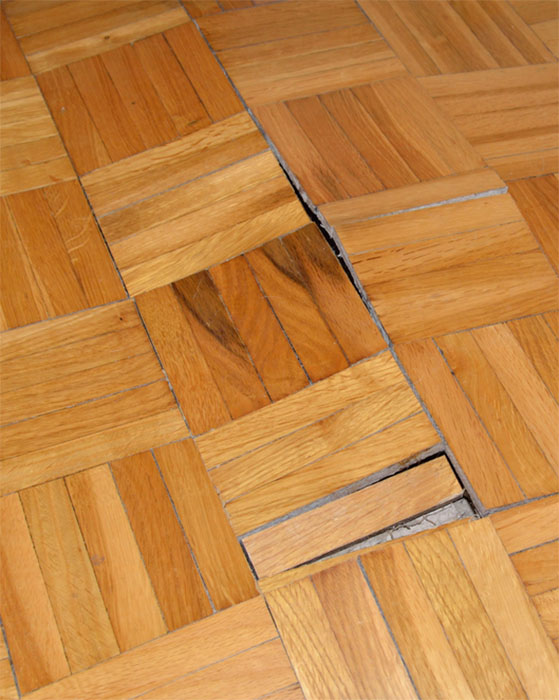Need Expert Help To Restore Water-Damaged Flooring Near Essex County? Call Top Hat & Tails Carpet Cleaning Today
Water damage is one of the most destructive problems a home or business can face. Whether caused by a burst pipe, flooding, or an unnoticed leak, excess moisture can wreak havoc on all types of flooring, leading to warping, mold growth, and structural deterioration. Proper water damage restoration can help preserve the integrity of your floors and maintain a safer indoor environment.
Top Hat & Tails Carpet Cleaning provides expert water damage restoration services, helping homeowners and businesses across Essex County and beyond address moisture issues before they cause irreversible harm. Understanding how water affects different flooring materials and knowing when to take action can prevent pricey repairs and health risks. If water has damaged your flooring, call us at 973-450-1947 or contact us online to schedule a consultation.

What Happens to Hardwood Floors When They Get Wet?
Hardwood floors are highly susceptible to water damage. Unlike tile or vinyl, wood is porous which means it absorbs moisture quickly. When hardwood flooring gets wet, several issues can arise depending on the extent of the exposure, and you could end up with severe structural problems if not addressed promptly. One of the first signs of water damage is cupping, which occurs when the edges of wood planks rise higher than the center. This happens when the bottom of the flooring absorbs more moisture than the top, causing an uneven surface. If left untreated, cupping can become permanent, requiring sanding or even replacement of the affected boards. Another common issue is buckling, where the wood pulls away from the subfloor due to excessive water absorption. Buckling is a more severe form of damage and typically occurs when flooring is exposed to prolonged moisture without proper drying methods. This can compromise the entire flooring structure, making it unsafe to walk on. Discoloration and mold growth are also major concerns. When moisture seeps into hardwood, it creates the perfect environment for mold and mildew, which can spread beneath the surface. Stains or dark spots on wood flooring may indicate fungal growth, which not only affects the aesthetics of the floor but can also pose serious health risks.Is It Safe To Keep a Carpet After Water Damage?
Carpeted flooring is another area of concern when dealing with water damage. Whether or not a carpet can be saved depends on several factors, including the source of the water, how long it has been wet, and the extent of the saturation. If the water comes from a clean source – such as a broken water supply pipe – there is a better chance of salvaging the carpet. However, drying must begin immediately to prevent mold growth.
On the other hand, if the water damage results from flooding, sewage backups, or contaminated water sources, carpet replacement is often the safest option. Contaminated water carries bacteria, viruses, and harmful toxins that can remain in carpet fibers even after drying. In these cases, keeping the carpet poses serious health risks, especially for households with children, pets, or individuals with respiratory conditions.
Another important factor is the carpet padding. Even if the carpet itself appears salvageable, the padding underneath often retains moisture, making it a breeding ground for mold. If the padding remains damp for more than 24 to 48 hours, it typically needs to be replaced to prevent microbial growth.
If your carpet has been affected by water damage, you must get it assessed by a professional. Drying alone is usually not enough – deep cleaning, antimicrobial treatments, and proper ventilation are all necessary to ensure the flooring remains safe for continued use.
How Do I Know if Water Has Seeped Under My Tile Flooring?
While tile flooring appears waterproof, moisture can still create issues, particularly if it penetrates below the surface. Though tile itself doesn’t absorb water, the underlying materials – like grout, adhesive, and subflooring – can be damaged by extended moisture exposure.
A frequent sign of water under tile flooring is loose or moving tiles. Trapped water can weaken the adhesive-holding tiles, making them unsteady or causing detachment. Unstable tiles may indicate hidden moisture. Grout discoloration is another major warning sign. Moisture entering grout lines can stain or darken the grout, signaling water retention. In serious cases, mold or mildew may grow, producing a bad smell or visible dark or green spots.
A hollow sound when tapping tiles can also mean water has damaged the subfloor. If the bond between the tile and the subfloor is weakened by moisture, the tile won’t sit firmly, creating a sound difference when walked on. If you suspect water damage under your tile flooring, a professional evaluation is critical. Air on the side of caution and reach out to Top Hat & Tails Carpet Cleaning to schedule a consultation.
Are There Health Risks With Water-Damaged Flooring?
Water-damaged flooring is not just an aesthetic concern – it can also pose serious health risks. When moisture lingers in carpets, hardwood, or tile subflooring, it creates the perfect environment for harmful contaminants. Some of the most common health risks associated with water-damaged flooring include:Mold and mildew growth.
Bacteria and pathogens.
Poor indoor air quality.
Structural problems.
Odor and chemical sensitivity.
Revive Your Water Damaged Flooring Today
Water damage can cause significant harm to your floors if not addressed quickly. Top Hat & Tails Carpet Cleaning specializes in water damage restoration, providing fast and effective solutions to protect your home or business. Our team uses advanced drying equipment, deep cleaning methods, and mold prevention techniques to ensure your flooring is fully restored. If your floors have been affected by water damage, don’t wait to take action. Contact us today at 973-450-1947 or click here to schedule an assessment and let our experts restore your flooring to its best condition.
Moisture exposure can leave carpets in rough shape. Luckily, Top Hat & Tails Carpet Cleaning offers expert carpet restoration options.
